
Early in 2013, I started to ask questions, research, and prepare for a fly fishing trip to Pyramid Lake. I am by all accounts a small stream fisherman and have limited experience fishing lakes. Having said that, a shot at a 10 or 15 pound fish had me willing to try out Pyramid. I had a 1000 questions though – What fly rod to take? What flies to tie? What’s the ladder for? As I started researching these questions, many of them could be found on various forums, but nothing concise enough for me to read through and have a whole understanding of everything that goes into fly fishing Pyramid Lake. So here are my novice thoughts on preparing for Pyramid Lake.

Where to stay at Pyramid Lake:
There are a couple of different options for lodging while fishing Pyramid Lake. We were lucky enough to get a trailer at Crosby’s Lodge which is right on the lake and a 5 minute drive to start fishing. We were concerned because Crosby’s filled up quickly and we were on a waiting list. You can camp there on most of the lake beaches, but wind and low temperatures in the spring become huge issues. You must have a permit which is available at one of the stores there, or they are also available online. Also I have heard several stories of people’s camping gear getting stolen or destroyed by others, but I guess you run that risk everywhere. The other half-way decent option for lodging is Reno, where you can get a hotel room for relatively cheap. The only downside is that it’s a 45 minute drive from Reno to Pyramid Lake. My favorite place to stay at are the Portrush Hotels.
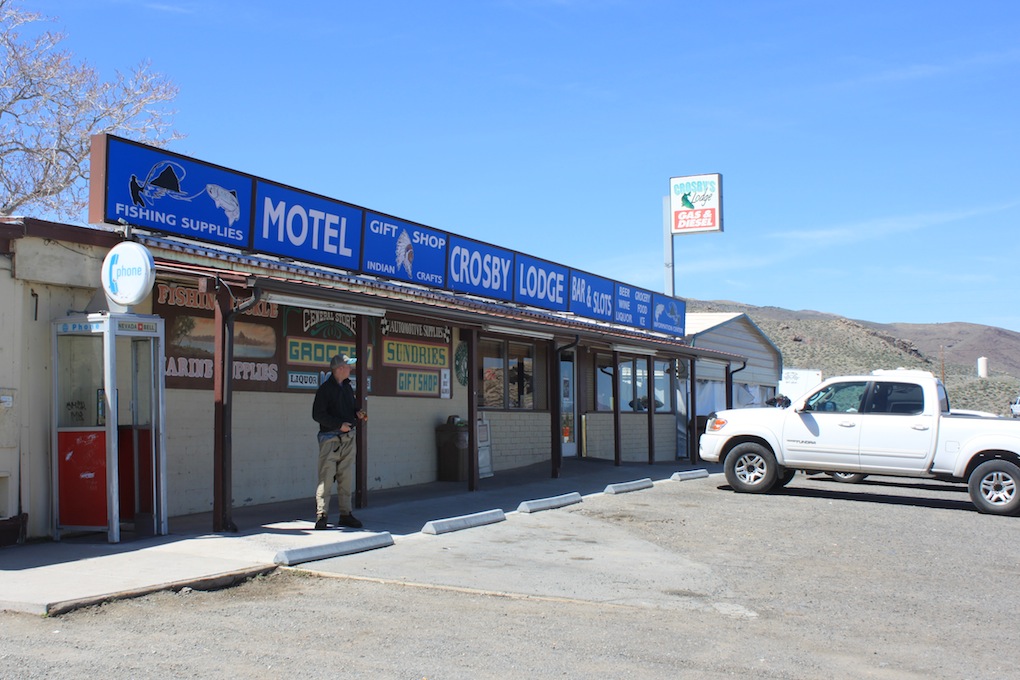
Fly Rods, Reels, and Line for Pyramid Lake:
Rods – Most everyone that I talked to recommended a 6-8 weight rod for fly fishing Pyramid Lake. It was explained to me that the heavier weight rod is not necessarily for the big fish (although that does help), but it’s more for punching through the heavy winds that plague the fly fishermen there. Many bring their 5 weights and do just fine, but the heavier weight fly rods are considered the better tool for the job.

For me I took my 9′ 6wt TFO BVK and a 9′ 8wt Scierra. I paired my 6 weight with a Lamson Konic reel spooled with a floating line, which I planned to use with my indicator rig. On the indicator, I used one of my flourocarbon furled leaders and tied 12 pound flourocarbon to the tippet ring. The way the bottom of the lake is made up, many of the fish cruise right along the shelf looking for food. Hanging big, bright nymphs under an indicator can be very productive, especially when the wind picks up and the waves start rolling in. When the waves roll, the nymphs bob up and down and often trigger strikes from big fish.
I made an investment for my 8 weight and picked up a Galvin Rush reel with an extra spool. I lined it with a Cortland Precision 30′ “QD”Quick Decent fly line with a 200gr shooting head. This line is nice because the heavy shooting head and intermediate running line sinks together as opposed to having a huge hinge in the center. While I was there at Pyramid Lake, we originally tried drifting indicators and nymphs, but quickly found that stripping wooly buggers and beetles back along the bottom to be more productive
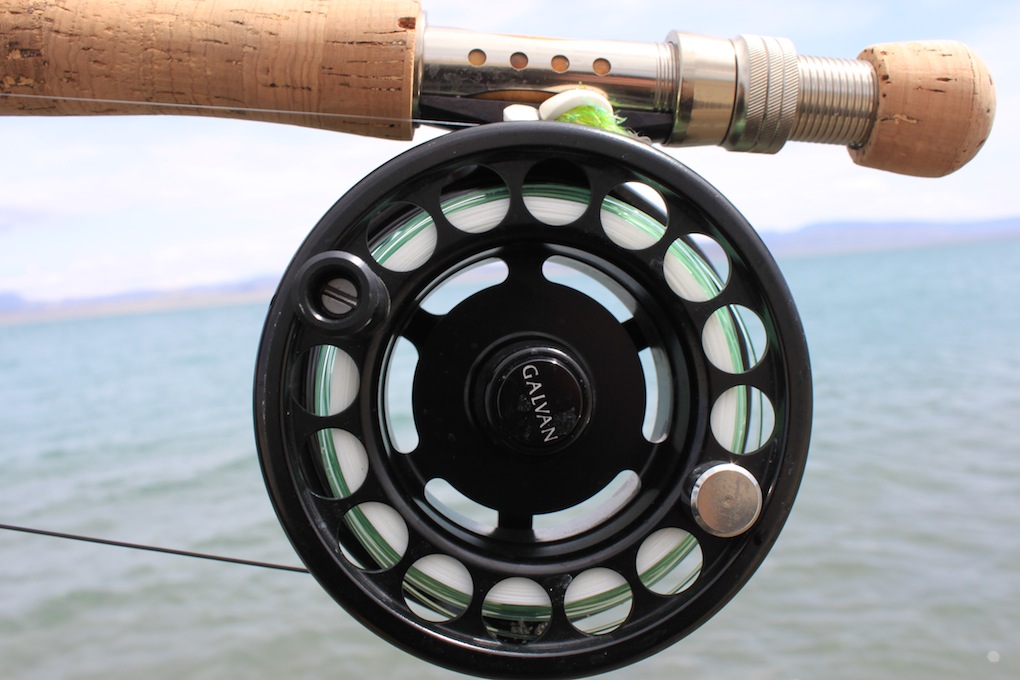
1. Ladder – The main reason for using a ladder at Pyramid Lake is to get up and out of the water. I think it originally started with milk crates and graduated to ladders. Float tubes are an option, but the wind blows you around pretty good. Nowadays, fisherman will wade out about chest deep in the water and set up their ladder so that they are right along the big drop off. This allows them to stand several rungs up, get mostly out of the water, and be able to make a cast. In some cases, you can actually see cruising fish as they move along the ledge looking for food.
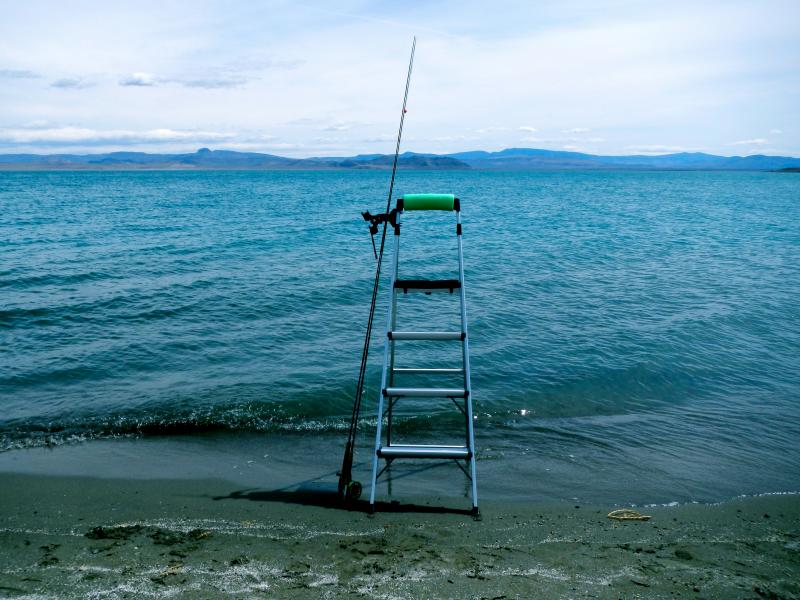
Here are my thoughts on ladders: The economical choice is to fish what you have. My buddy let me borrow is three step ladder which I used the first day. It sucked, because I was calf deep in extremely cold water and I chilled very quickly. I switched to my 6 foot A-frame ladder and was then able to climb higher on my ladder and be out of the water, but the A-Frame’s steps are very thin and after 10 hours standing on a ladder, I was fatigued and experiencing serious ladder envy. My buddy, Kyle, who runs the website Sleep When You’re Dead, had done a bit more research and rigged up a very comfortable ladder with a couple of easy modifications for Pyramid Lake. I came home and invested in a similar setup for my future trips to Pyramid, and the ladder will work as an all purpose ladder around the house.
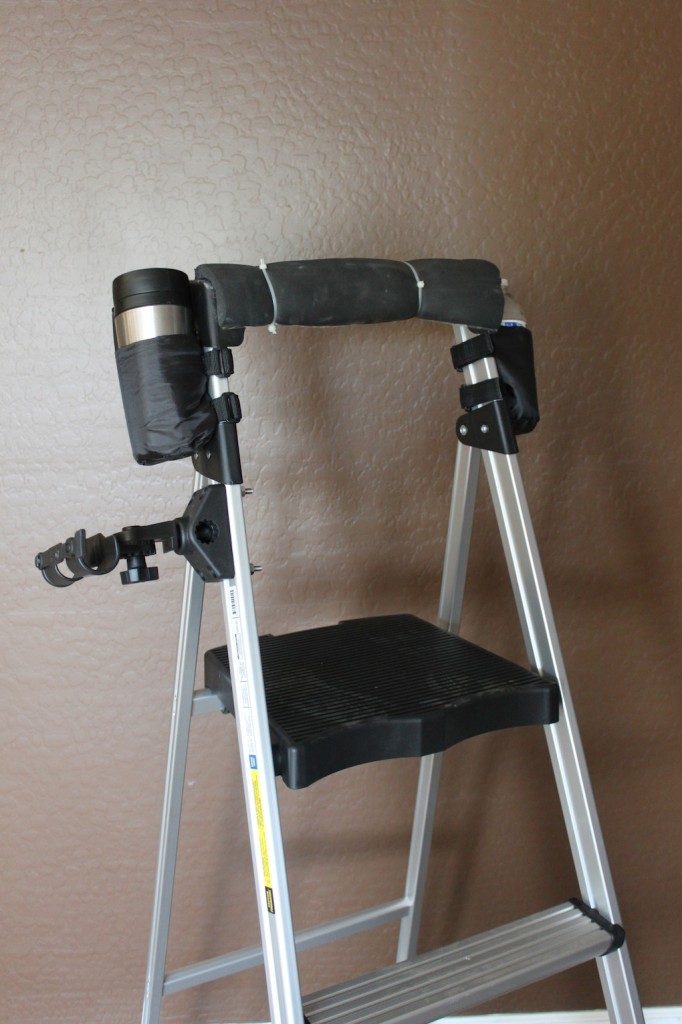
The Ladder – Easy Reach Gorilla 4 step ladder
Rod Holder – Scotty Fly Rod Holder
Cup Holders – Rugged Ridge Velcro Cup Holders

I added a couple of velcro cup holders for water and a coffee cup, as well as some padding for shins and knees. Leaning into a ladder for three days does a number on your knees and legs. Do not underestimate the value of a comfortable ladder.
2. Stripping Basket – Standing on a ladder while stripping line back to yourself can make a mess real quick. Having a stripping basket to strip line into, can clear up a lot of the hassle. Never having used a stripping basket before, I was able to get my hands on a Linkurv stripping basket. I greatly underestimated the need for a stripping basket and was extremely glad that I had it with me on the trip.
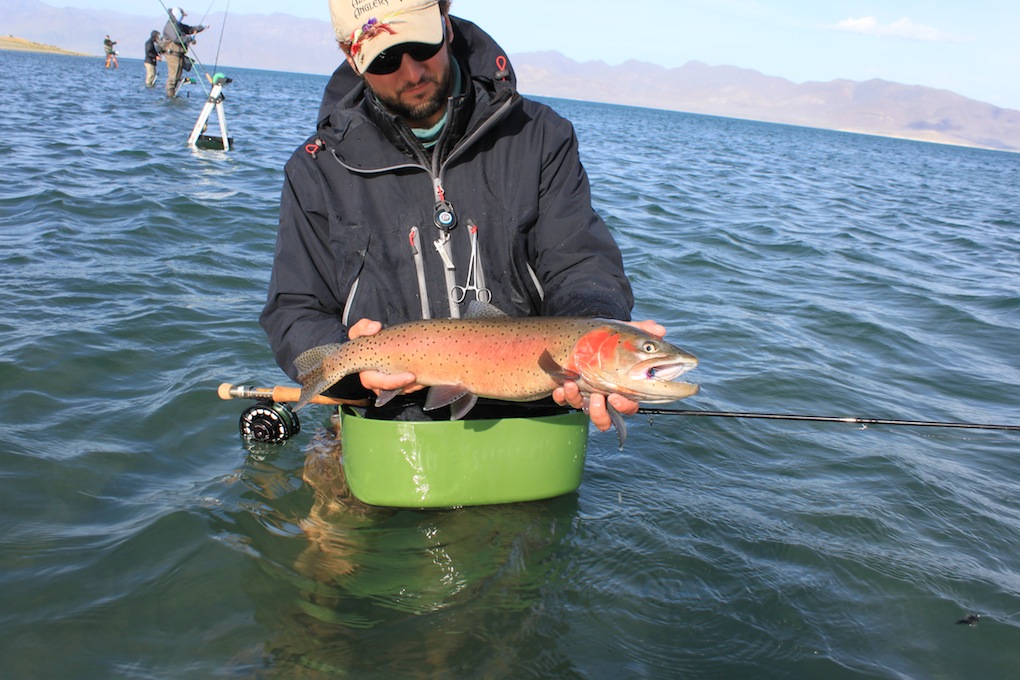
3. Waders and Layers – The worse the weather and wind at Pyramid Lake, the better the fishing. Having said that, standing on a ladder all day in the howling wind can get old real quick. The water itself is extremely cold and fly fishermen should be prepared with proper layering. I layered up with a merino wool base layer, fleece wading pants, and breathable chest waders. On my top, I wore a merino wool base layer, my lucky Filson shirt, REI Primaloft jacket, and my Cabelas softshell. I stayed pretty toasty all day.
Tactics for Pyramid Lake:
There are two distinct ways to fly fish Pyramid Lake: Indicator fishing and stripping flies. Both can be very effective and it is the main reason why many Pyramid Lake fly fishermen show up with two fly rods.
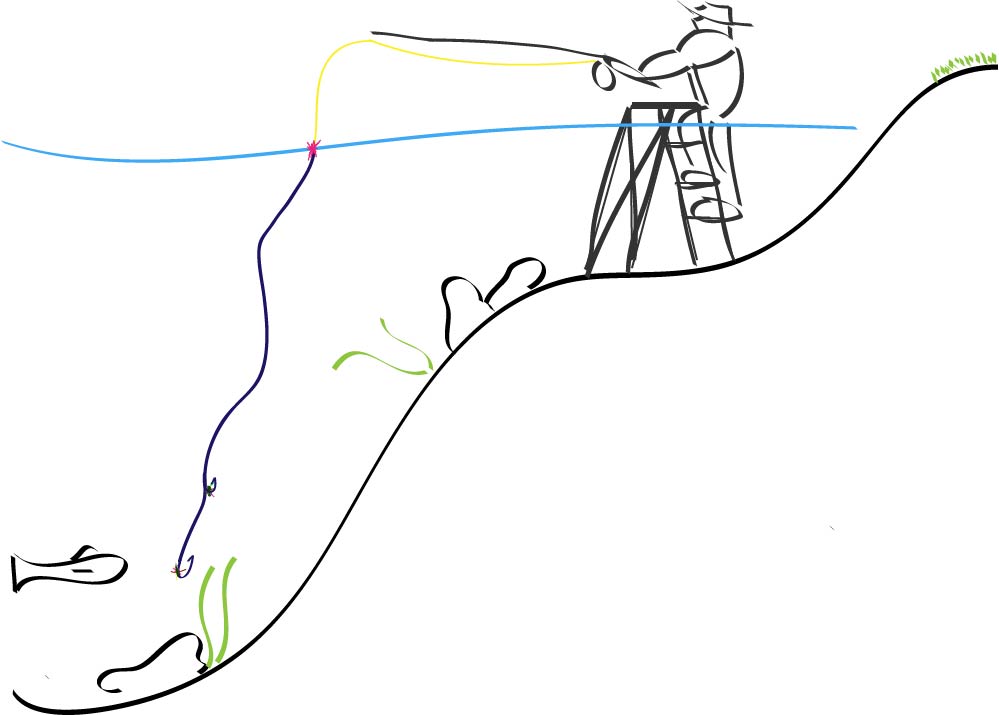
When getting ready to head up to Pyramid, everyone I talked to explained how indicator fishing was the most productive. Typically, fly fishermen attach around 7-9 feet of 12lb. fluorocarbon strait to their fly line and tie their first nymph to the other end. Then, add another 2 feet of fluoro and attach your second nymph. The goal is to be hanging the nymphs right off of the bottom of the drop off where the big cutthroats are cruising. The indicators do not spook the fish, so bigger is better.
Big indicators are also important as the wind creates some pretty good chop and bigger indicators are easier to keep track as they roll over the waves. I have also heard that the more wind and waves, the better, as it causes the hanging nymphs to have more movement under the water. Also, because there is so much wind and movement, the lake seems to have an actual current, so having a dead drift is important on Pyramid. When the action gets slow though, give the indicator a twitch or two, as sometimes this can draw a strike.
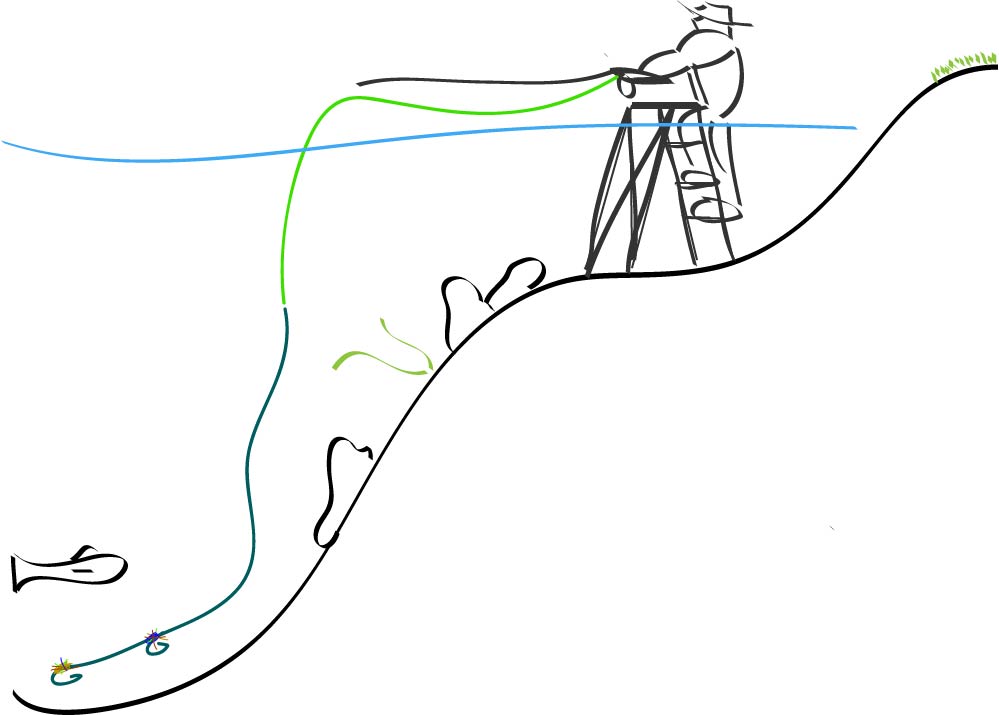
On my trip to Pyramid, I found that stripping flies was the most productive method for my time on the water. I got bored real quick while looking at an indicator so I moved over to stripping flies. We rigged a piece of 12 pound fluoro straight from the end of a heavy sinking line to the first fly. The lead fly does not need to be weighted as the sinking line does most of the work in that regard. We often chose a black wooly worm and tied another foot and half to two feet of fluoro to the second fly which was usually a “popcorn beetle” (white foam/chartreuse body) or a midnight beetle (northern lights foam/purple body). Since the second fly was made of foam and buoyant it often had really good action and illicit many takes as it literally bounced along the bottom of the lake.
The other method that is often used at Pyramid is called “Floater No Cator” which is really just what it sounds like: floating line, two nymph setup, with no indicator. Simply cast your flies out as far as possible and allow them to sink to the bottom. Once they are on the bottom, slow strip them back. This method allows you to feel the take as opposed to seeing an indicator go under. Many Pyramid Lake fly fishermen swear by this technique and say that it often results in bigger fish.

Fly Patterns for Pyramid Lake:
This is by no means an exhaustive list but here are some of the patterns that I tied and fished on the lake. If you have other suggestions, please leave a comment below and I’ll add them to the list.
– Nymphs (#10-#6)
Higa’s SOS Nymph
– Chronomids (#10-#6)
Snow Cone Midge
Zebra Midge

– Tadpoles and Beetles (#6)
Can be tied in many different color combos. Below are some of the popular ones –
White Foam/Chartreuse Estaz underbody (Popcorn Beetle)
Northern Lights Loco Foam/Purple Estaz underbody
Red Foam/Red Estaz underbody
– Buggers/Streamers
Wooly Buggers
In all honesty, I had my doubts about Pyramid Lake when I first went up, but after 3 solid days of fishing on the water, I was hooked. I’m headed back next spring and will be looking for my first 10# fish. If this article has been helpful or I can add something to it, feel free to leave me a comment below. Take care and good luck at Pyramid Lake

Sign up to receive email updates from Arizona Wanderings

Great overview! I had a bunch of friends make the trip this year but I wasn’t able to join them. Amazing fish, Pyramid is on my list for sure.
Thanks Steven. It’s definitely worth the trip.
Ben
Ben this is spot on. Thanks for putting it together. I’ll refer people here who ask about our trip. And… now i’ve got some ladder envy. Cup holders!? I’m going to have to get me some.
Thanks Kyle. Can’t wait to head back with you next year and stand on a more comfortable ladder. Your NM trip looked pretty successful. Congrats.
Ben
Truly a fascinating place. While I have never fished this lake, I have been there and enjoyed just learning about the water shed and how unique it is. When you see all the pictures on the wall at Crosby’s it makes you want to go stand on that Ladder all day just for the chance. Thank you for the post.
It definitely is Woody. That wall at Crosby’s is just unreal and keeps you on the ladder for sure. Thanks for the comment.
Ben
As a visiting Scotsman, I found the info pretty darned good and I/we had one helluva time with some really big Lahontan cut throat trout up to 30+ inches long, and several of them fishing “Buzzers” or chironomids in sizes 12 – 10 Crimson and Zebra type, no indicator or float fishing there just swinging in the breeze was great stuff. I don’t like ‘Float Fishing’, I’m a Fly Fisherman, floats are for the a English and European Course fishing crews.
Thanks for the help mate.
Great to hear man. Glad you had a good trip.
Ben
Very well done Ben. Wish there was a resource like this available when I started fishing there. Looking back, I don’t know how I convinced my brother and brother-in-law to make the drive up there to fish the first time–I knew nothing about the Lake other than the limited information I obtained from watching one episode of Trout Unlimited.
Well Landon, this would not have been possible without you. I appreciate you taking the time to show me the ropes. Looking forward to hauling ladders back up there next spring.
Ben
Thanks for putting this informative piece together, and satisfying my curiosity about those ladders!
You’re very welcome Andrew. I’m glad you found it helpful.
Ben
Only thing I would add is: wear the highest wool content socks you can find and consider using a polypro liner sock under it.
Great piece Ben! Just by the look of some of your patterns you seem to be finding some of your synthetics in the same “fly shops” that I have been shopping in for most of my life….quilt shops and fabric stores. Madera Jewel is one of my favorite types of machine embroidery thread for bodies other brands as well have some great colors too but I started with Jewel as the line has the entire color spectrum and it is designed with a good amount of stretch and lays where you put it and takes top coats perfectly. That Tadpole pattern reminds me of the gurglers tied on 2’s to 2/0 for bass and pike. great stuff man!
Thanks Dan. The craftstore is where it’s at, for sure.
Great write up Ben – Wish I would have seen it before we went up there! Info is spot on and now I have to pimp out my own ladder for next time…Wide steps are a must, my feet still hurt from standing on skinny steps.
Thanks Jon. Looks like you guys had a blast. I’m looking forward to my trip up there. Should be fun.
Ben
Excellent overview Ben. Like the account of your personal findings and preferences. Going up for the first time in April 2016.
Thanks Steve. Good luck on your upcoming trip.
Ben
I moved to Colorado in 79, but before that we fished with wolly worms ( they weren’t buggers yet) on the end on lead core shooting lines, using 10 wt fiberglass rods made by Mid Laperia of Sparks. Most of the action was by the mouth of the river. Be carefull of the “quick sand”. Rubber waders and a warming fire were common, but a group from Susanville introduced the first home made ladders, platforms with plastic chairs on top. Lots of 6 to 12 pound cutts in those days.
I also walked uphill both ways to UNR, but only M, W, and F. Fished T and Th.
Would like to get back, Jim.